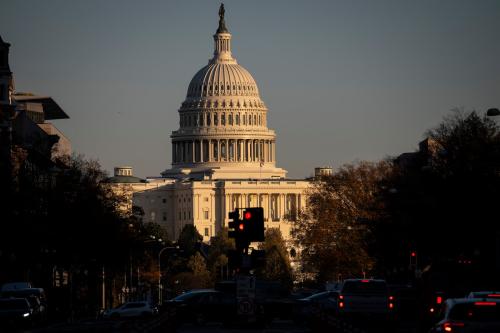In the current policy landscape, virtually every stakeholder—from federal agencies to industry groups—calls for classifying a widening swath of economic activity as “national security.” The impulse to broaden what counts as critical has gained momentum not only with each new global disruption, but also with each new report highlighting U.S. exposure to China in key sectors, making “national security” a catchall for fears that range from supply interruptions to cyber threats. While this instinct reflects real vulnerabilities, it leaves policymakers struggling to prioritize and risks making the label so expansive that it ceases to have sharp policy meaning.
This paper cuts through that noise. We agree with the notion of expanding the concept of national security to include production supply chains, the interruption of which by a hostile foreign actor could directly imperil large numbers of American lives or the functioning of society. Our approach, however, is not simply whether to broaden the concept of national security, but how to realistically scope it—especially when it comes to supply chains. (We leave debates about expanding the framework to cover topics like cyber or information influence for other venues.) Our premise is simple: Yes, we need to think about more than the defense industrial base when deciding which sectors of the economy are within a broader “national security industrial base,” and accordingly are protected or strengthened. Yet without disciplined prioritization, government efforts risk becoming fragmented, inefficient, and ultimately unable to protect what matters most.
Multiple legislative efforts—from the Promoting Resilient Supply Chains Act in Congress to new mapping initiatives from the Department of Defense (DOD) and Commerce Department—attest to Washington’s determination to reduce exposure to adversaries and harden fragile supply lines. But with so many agencies, industries, and sectors seeking “critical” designation, the path from mapping everything to protecting anything remains unclear.
This paper proposes a disciplined framework to help policymakers navigate these choices. We focus on supply chains—where physical disruption, not just digital attack, can quickly undermine military readiness, economic stability, or the population’s health and safety. We further direct our focus to supply chains at potential risk due to actions by hostile foreign actors (as opposed to natural disasters, for example, though improving resilience against natural disasters is also important, of course). Our main focus is on the potential physical interruption of supply chains, rather than vulnerabilities to either natural disaster or cyberattack, though we do note several cases where cybersecurity considerations would argue for rethinking certain supply chains. We offer clear criteria and sectoral context to distinguish risks that truly rise to the level of national security from those with a less direct, mainly economic or commercial effect.
We argue that supply chains are a national security matter when these three conditions coincide:
- Supply chain disruption caused by an adversary would rapidly threaten lives, national defense, or essential economic sectors.
- Substitutes are unavailable or cannot be mobilized quickly.
- Building surge capacity through allies or domestic investment is not realistic in relevant timeframes.
Importantly, we do not argue for self-sufficiency in all things, nor do we ignore other potential vulnerabilities such as those in cyber; rather, we focus on those physical and productive supply chain bottlenecks that—if left unaddressed—could be exploited in a conflict or crisis.
This paper is organized as follows. The next section discusses the traditional approach to supply chains and national security, namely, the supply chains supporting the DOD military industrial base. The country is making progress in strengthening these sectors, including through DOD initiatives as well as the CHIPS and Science Act of 2022, but a good deal more remains to be done. We then discuss a framework for rightsizing an expansion of the national security framework to encompass civilian supply chains. Next, we apply the framework to the remaining 15 sectors already designated by the U.S. government as critical infrastructure and identify where vulnerabilities with national security implications may currently exist. We follow the sector analysis by identifying cross-cutting supply chain vulnerabilities that may affect multiple sectors. We conclude with a set of recommendations for next steps in advancing the proposed framework.
-
Acknowledgements and disclosures
This project is sponsored in part by the Uniformed Services University of the Health Sciences (USU); however, the information or content and conclusions do not necessarily represent the official position or policy of, nor should any official endorsement be inferred on the part of, USU, the Department of Defense, or the U.S. government.
The authors are grateful to Alejandra Rocha and Monica Gorman for their helpful comments and feedback on this paper. Special thanks are also due to Adam Lammon for editorial support and Rachel Slattery for layout support.
The Brookings Institution is committed to quality, independence, and impact.
We are supported by a diverse array of funders. In line with our values and policies, each Brookings publication represents the sole views of its author(s).









